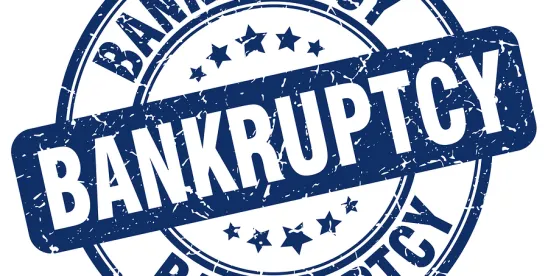Bankruptcies by Industry
-
Bankruptcy filings decreased across most industries in 2021, including those industries with the most filings following the pandemic: Mining, Oil, and Gas; Retail Trade; Manufacturing; and Services.
-
In 1H 2022, bankruptcy filings across most industries continued to decline from mid-2020 pandemic highs.
-
Forecasts of a continued trend of increased bankruptcies in 2021 were disrupted by government stimulus programs, low borrowing rates, and high debt forbearance. Oil prices also rose by 55.8% in 2021, and surged another 43.1% in 1H 2022. Consumers spent $163 trillion in 2021, 7.9% and 3.8% higher than in 2020 and 2019, respectively.
30%: Percentage of bankruptcies filed in 1H 2022 by Finance, Insurance, and Real Estate companies.
-
Consistent with oil price and consumer spending increases, Mining, Oil, and Gas and Retail Trade bankruptcies, which together accounted for 48% of bankruptcies in 2020, declined to 21% in 2021 and 15% in 1H 2022.
-
While Retail Trade bankruptcies have declined, supply chain disruptions, rising inflation, labor shortages, and high debt burdens and interest rates have increased expectations for future Retail Trade bankruptcies among some commentators. Although classified as Manufacturing, cosmetics company Revlon Inc. filed for bankruptcy in June 2022, citing supply chain issues, combined with labor shortages and rising inflation.
-
A notable exception to the trend of substantially declining bankruptcies was Finance, Insurance, and Real Estate, which increased from 10 bankruptcies in 2020 to 15 in 2021, and remained elevated with six in 1H 2022—the most by any industry in 1H 2022.
-
Real estate investment remains challenged by struggles of traditional shopping centers and hotels, as well as changes in consumer and worker behavior, in the wake of the pandemic. In addition, signs of a potential global recession and high inflation have increased concerns for cryptocurrency and financial firms.





 />i
/>i
